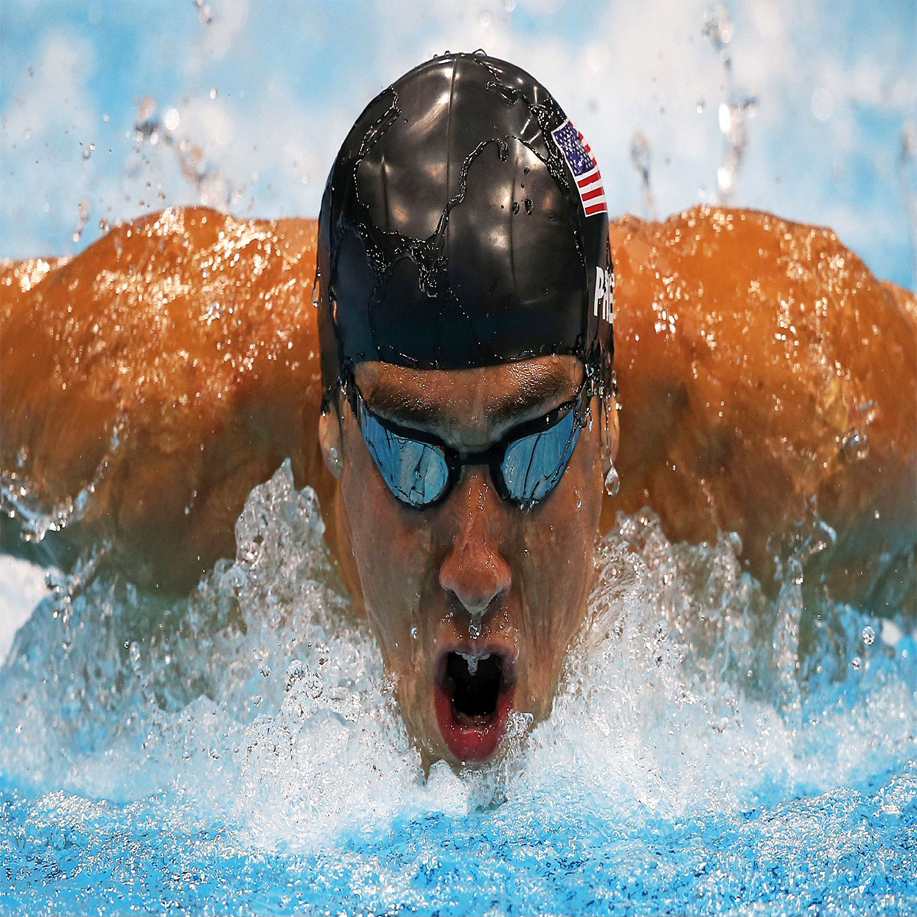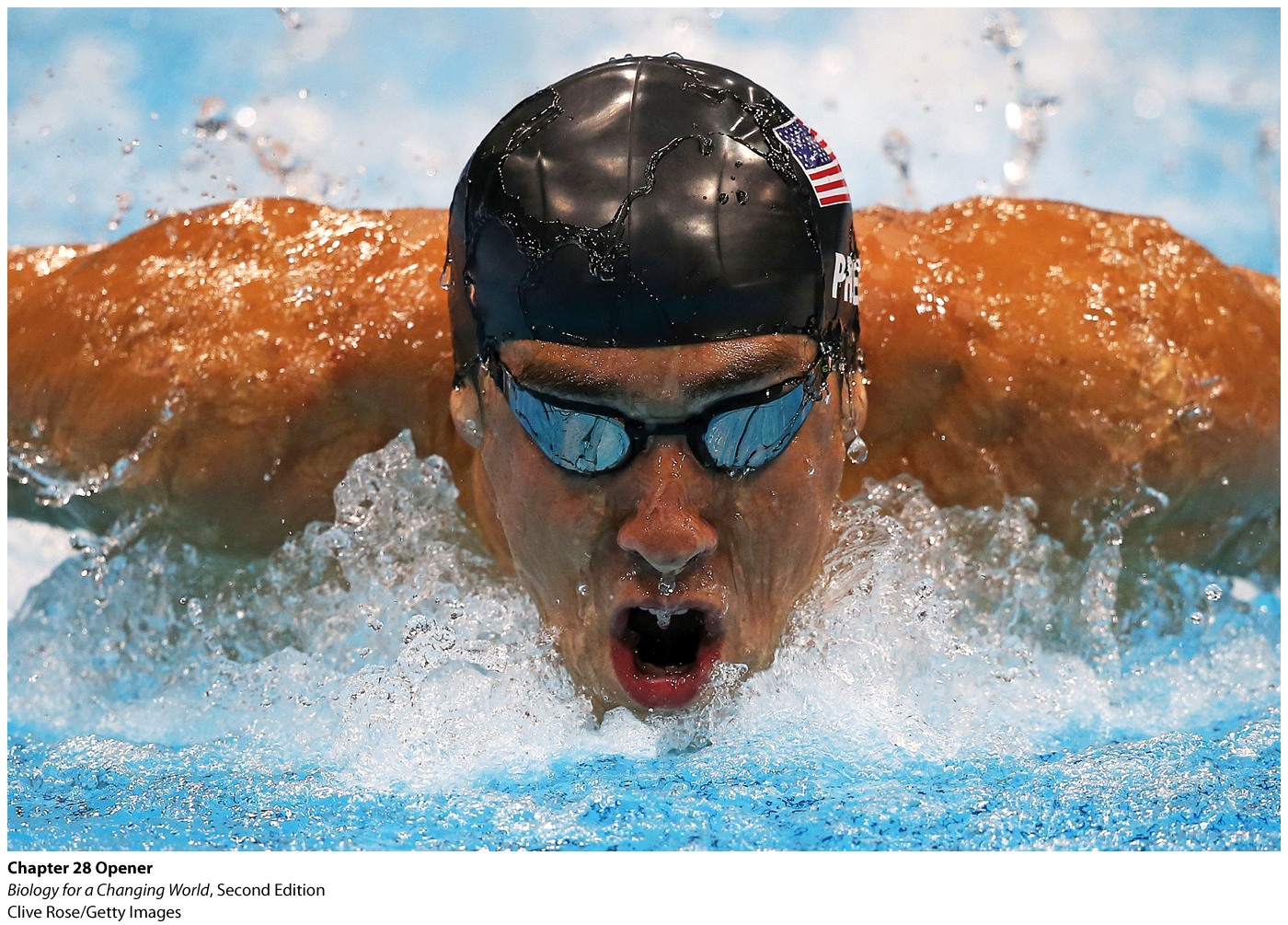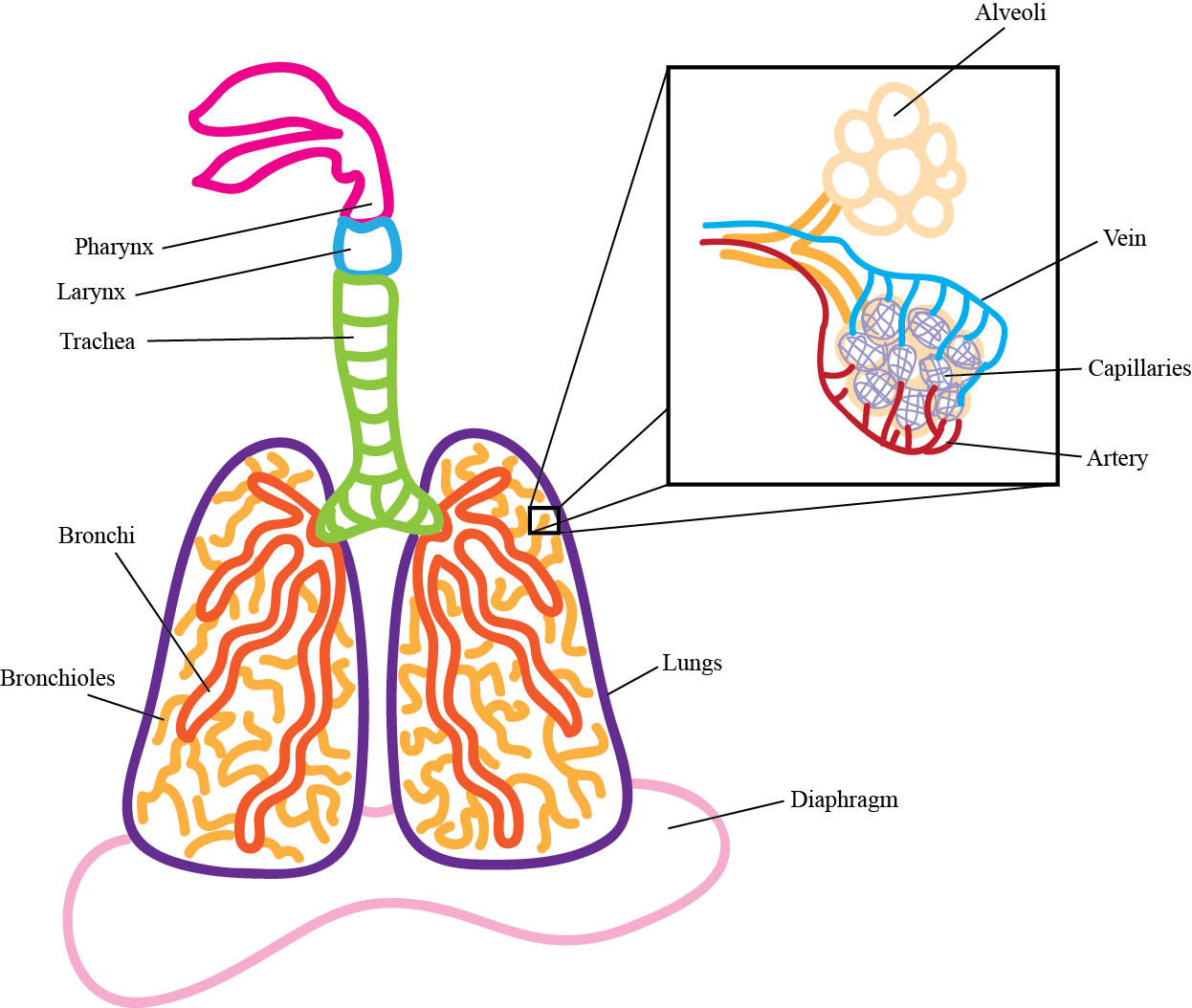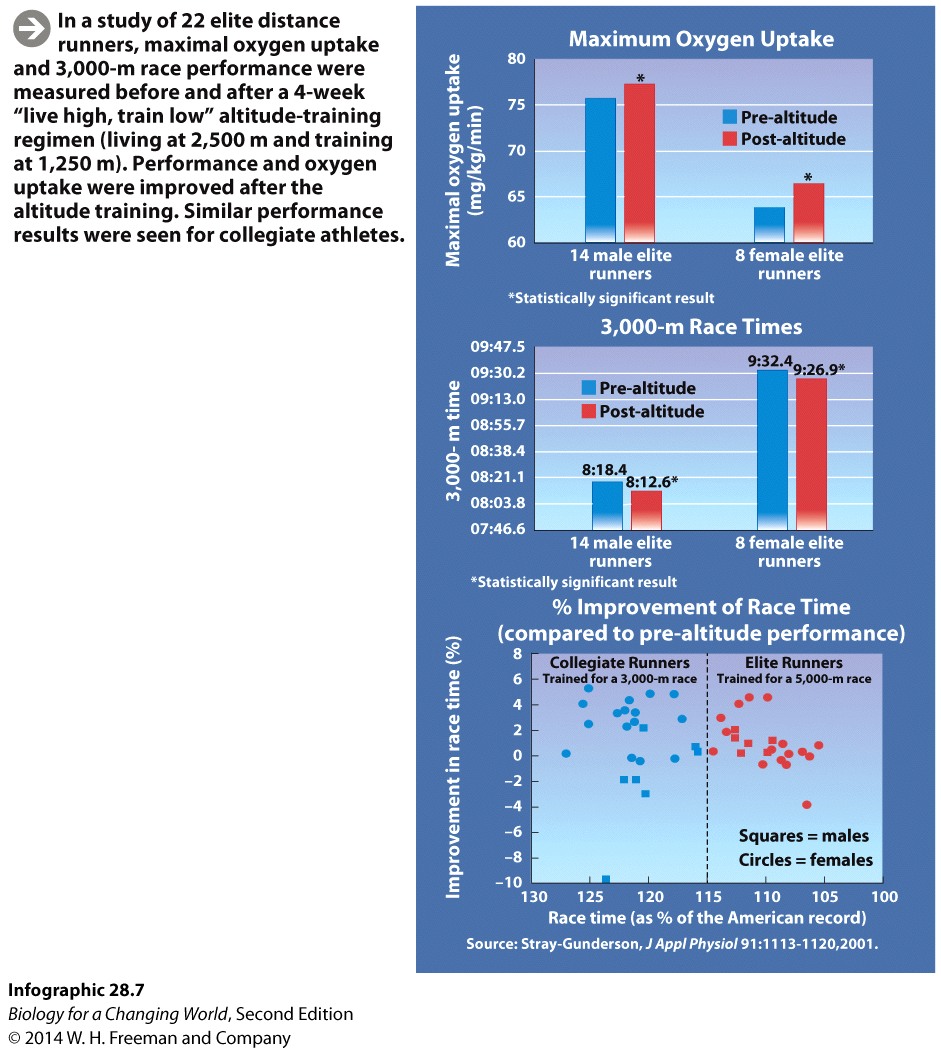
Chapter 1. Chapter 28: Respiratory System
1.1 Introduction


Welcome to the Interactive Study Guide for Chapter 28: Respiratory System! This Study Guide will help you master your understanding of the chapter's Driving Questions, using interactive Infographics and activities, as well as targeted assessment questions. Click "Next" to get started, or select a Driving Question from the drop-down menu to the right.
Peak Performance:
An inside look at altitude training among elite athletes
DRIVING QUESTIONS
- What structures make up the respiratory system?
- How do the respiratory and cardiovascular systems cooperate to deliver oxygen to body cells and remove carbon dioxide from tissues?
- What factors influence the oxygen-carrying capacity of blood and breathing rate?
- How can scientific knowledge of the respiratory system be used to design training regimens for elite athletes?
1.2 Driving Question 1:
Driving Question 1
What structures make up the respiratory system?
Why should you care?
Every cell in your body needs oxygen to perform aerobic respiration to make ATP. Without ATP, the body’s energy currency, cells would not be able to function, tissues and organs would stop working, and death would follow. The ability to utilize oxygen to produce ATP evolved around 2 billion years ago as eukaryotic organisms arose. Methods to obtain oxygen from the environment have been evolving ever since. As large, multicellular eukaryotic organisms, humans need a way not only to obtain oxygen from the atmosphere but also to deliver it to all areas of the body. The respiratory system, in conjunction with the circulatory system, is nature’s eloquent answer to this complex issue.
What should you know?
To fully answer this Driving Question, you should be able to:
- Draw and describe the major structures of the respiratory system.
- Explain the mechanics of breathing.
Infographic Focus
The Infographics most pertinent to the Driving Question are 28.1 and 28.6.
Test Your Vocabulary
Choose the correct term for each of the following definitions:
| Term | Definition |
|---|---|
| The organ system that allows us to take in oxygen and unload carbon dioxide. | |
| The major respiratory organ in humans; the site of gas exchange between air and the blood. | |
| The throat. | |
| A large airway leading to the lower respiratory tract. | |
| Two airways that branch from the trachea; one bronchus leads into each lung. | |
| Smaller airways that branch from the bronchi. | |
| Air sacs in the lung across which gases diffuse between air and blood. | |
| The process of moving air in and out of the lungs. | |
| A sheet of muscle that contributes to breathing by contracting and relaxing. | |
| The opening to the lower respiratory tract; also known as the voice box. |
Draw and describe the major structures of the respiratory system.
1.
In your notebook, draw the structures that make up the human respiratory system. In the space below, write brief descriptions of the pharynx, larynx, trachea, lungs, bronchi, bronchioles, alveoli, and diaphragm.

- pharynx: throat, where the inhaled air goes first
- larynx: also called the voice box, opening to the lower respiratory tract; air passes through this region and causes vibrations that we hear as sound
- trachea: large, ridged airway that leads to the lungs
- lungs: site of gas exchange between air and blood; major organs of the respiratory system
- bronchi: the two branches from the trachea, leading one to each lung
- bronchioles: smaller airways that branch off the bronchi
- alveoli: air sacs at the end of bronchioles that are the site of the gas exchange, closely interacting with capillaries
- diaphragm: sheet of muscle that controls breathing by contracting (breathe in) and relaxing (breathe out)
2.
When a person is choking, an incision through the neck and into the trachea, called a tracheotomy, can be performed. Why can this procedure save that person’s life?
3.
With which respiratory structure does the circulatory system directly interact to oxygenate blood?
Explain the mechanics of breathing.
4.
Write a two-sentence relationship statement about air pressure, diaphragm contraction, and ventilation.
5.
Why do you think pleural effusion, an excess in the amount of the fluid that normally surrounds the lungs, can impair breathing?
Review Questions
6.
What is the path of carbon dioxide on its way out of the body from the capillaries in the lungs?
| A. |
| B. |
| C. |
| D. |
7.
Where is the actual site of gas exchange in the lungs?
| A. |
| B. |
| C. |
| D. |
8.
When the air pressure in your chest cavity decreases, you will:
| A. |
| B. |
1.3 Driving Question 2:
Driving Question 2
How do the respiratory and cardiovascular systems cooperate to deliver oxygen to body cells and remove carbon dioxide from tissues?
Why should you care?
Now that you know why oxygen is important for eukaryotic life and how humans obtain it from the atmosphere, there remains the problem of how to deliver the oxygen to all cells of the body. Humans are not like frogs; we cannot absorb oxygen through our skin and thus ensure that it reaches all parts of the body. However, the circulatory system is an excellent vehicle for oxygen transport. Knowing how these two important systems interact will help you understand how some athletes take advantage of this relationship to enhance performance.
What should you know?
To fully answer this Driving Question, you should be able to:
- Describe the interaction of the respiratory and circulatory systems.
- Predict how problems in one system may affect the other.
Infographic Focus
The Infographics most pertinent to the Driving Question are 28.2, 28.3, and 28.8.
Test Your Vocabulary
Choose the correct term for each of the following definitions:
| Term | Definition |
|---|---|
| The process of taking up and releasing oxygen and carbon dioxide. | |
| A surface across which oxygen enters and carbon dioxide leaves. |
Describe the interaction of the respiratory and circulatory systems.
9.
Pretend you are an oxygen molecule about to be breathed by a human. Describe the journey from your start (the air surrounding the human) to your end (a given body tissue of said human). Name as many proteins, structures, tissues, and organs as you can. I did it in 22 steps. Can you beat that?
10.
Now, pretend that you are the byproduct of cellular respiration, carbon dioxide. Describe your journey from the body tissue of the same human to the air surrounding said human. Again, name as many proteins, structures, tissues and organs as you can! I did it in 17 steps. Can you beat that?
Predict how problems in one system may affect the other.
In the following situations, predict how the other system would be affected.
11.
Reduction of respiratory surface of the lungs due to emphysema:
12.
Thickening of alveolar cell membranes due to scar tissue formation from asbestos inhalation (asbestosis):
13.
Blockage of the pulmonary artery (called a pulmonary embolism) (Hint: Think back to Chapter 27 and the function of the pulmonary artery):
Review Questions
14.
Which two gases diffuse across the respiratory surface?
| A. |
| B. |
| C. |
| D. |
15.
Where does carbon dioxide cross from the circulatory system to the respiratory system?
| A. |
| B. |
| C. |
| D. |
16.
True or False: The respiratory system is capable of performing its functions without the circulatory system and vice versa.
| A. |
| B. |
1.4 Driving Question 3:
Driving Question 3
What factors influence the oxygen-carrying capacity of blood and breathing rate?
Why should you care?
So how do the circulatory system and respiratory system actually deliver oxygen to and remove carbon dioxide from the body? The answer is simple: blood. The blood contains enucleated, biconcave, flexible little cells called red blood cells that are essentially the “Pony Express” of oxygen transport. Blood also dissolves carbon dioxide and carries it away for expulsion from the body. Needless to say, without blood, a person would be not just very pale but very dead. So how does the blood keep everything in balance?
What should you know?
To fully answer this Driving Question, you should be able to:
- Identify conditions that raise or lower the oxygen-carrying capacity of blood.
- Explain how breathing rate influences the amount of carbon dioxide in the blood.
Infographic Focus
The Infographics most pertinent to the Driving Question are 28.3, 28.4, 28.8 and 28.9.
Test Your Vocabulary
Choose the correct term for each of the following definitions:
| Term | Definition |
|---|---|
| Iron-containing structures on hemoglobin, the sites of oxygen binding. | |
| An illness that can occur as a result of an abrupt move to an altitude with a reduced partial pressure of oxygen (thin air). | |
| Blood cells specialized for transporting oxygen throughout the body. | |
| A hormone that stimulates red blood cell production. | |
| The proportion of total air pressure contributed by a given gas. | |
| A protein found in red blood cells specialized for transporting oxygen. | |
| A dangerous condition in which blood is too acidic. |
Identify conditions that raise or lower the oxygen-carrying capacity of blood.
17.
In the table, say whether each given condition would increase or decrease the oxygen-carrying capacity of blood.
| Condition | Oxygen-Carrying Capacity of Blood | Your Reasoning in Terms of Hemoglobin |
|---|---|---|
| High altitude |
Fill in: |
Fill in: |
| Low pH |
Fill in: |
Fill in: |
| High temperature |
Fill in: |
Fill in: |
| High partial pressure of oxygen |
Fill in: |
Fill in: |
| Erythropoietin treatment |
Fill in: |
Fill in: |
| Condition | Oxygen-Carrying Capacity of Blood | Your Reasoning in Terms of Hemoglobin |
|---|---|---|
| High altitude | Increase | There are fewer oxygen molecules in the air, so the body compensates by producing more red blood cells and thus more hemoglobin. |
| Low pH | Decrease | The ability of hemoglobin to bind oxygen decreases in low-pH environments. |
| High temperature | Decrease | The ability of hemoglobin to bind oxygen decreases in high-temperature environments. |
| High partial pressure of oxygen | Increase | The ability of hemoglobin to bind oxygen increases in environments with high partial pressures of oxygen. |
| Erythropoietin treatment | Increase | This treatment increases the number of red blood cells made in the bone marrow and thus increases the overall amount of hemoglobin. |
18.
In the table, what is the main difference between the mechanism whereby high altitude and erythropoietin affect the oxygen-carrying capacity of blood and the mechanism whereby the rest of the conditions affect the oxygen-carrying capacity?
Explain how carbon dioxide concentration in the blood influences breathing rate.
19.
What is acidosis, and how does the body prevent it during exercise? Explain in terms of carbon dioxide and ventilation.
Review Questions
20.
True or False: Erythropoietin treatment increases the oxygen-carrying capacity of blood by increasing the amount of hemoglobin in each red blood cell.
| A. |
| B. |
21.
What are some adaptations seen in human populations who have lived at high altitudes for generations? Mark "yes" for all that apply.
| a. Tall stature | |
| b. Increased lung capacity | |
| c. Stronger chest muscles | |
| d. Better at athletics |
22.
If there is a high concentration of carbonic acid in the blood, breathing rate will:
| A. |
| B. |
| C. |
1.5 Driving Question 4:
Driving Question 4
How can scientific knowledge of the respiratory system be used to design training regimens for elite athletes?
Why should you care?
Elite athletes are typically people who year round, endure grueling physical workouts, and look for any reasonable and preferably ethical training method to give them a competitive advantage against their opponents. In a beautiful example of the scientific process in action, scientists and others noticed that during the 1968 Olympic Games in Mexico City, endurance athletes were falling short of expectations while other athletes, like sprinters and long jumpers, were breaking records left and right. This observation, the first step in the scientific method, led to questions and hypotheses as to why some athletes were successful and others were underperforming. Several experiments later, scientists, and now some trainers and athletes, believe that altitude affects athletic performance. In this case, the knowledge of how the respiratory system transports oxygen to the body and the effect of high altitude on this transport has led to specific training regimens for elite athletes that may give them an edge over their competition. Whether or not these training regimens are ethical is another matter.
What should you know?
To fully answer this Driving Question, you should be able to:
- Describe the live high, train low method utilized by some athletes and how this method is supposed to increase athletic ability.
- Interpret the data describing the effects of altitude training on athletic performance.
- Discuss whether using scientific knowledge to design training regimens is ethical.
Infographic Focus
The Infographics most pertinent to the Driving Question are 28.4, 28.5, 28.7, and 28.9.
Test Your Vocabulary
Choose the correct term for each of the following definitions:
| Term | Definition |
|---|---|
| A hormone that stimulates red blood cell production. | |
| An illness that can occur as a result of an abrupt move to an altitude with a reduced partial pressure of oxygen (thin air). | |
| The proportion of total air pressure contributed by a given gas. | |
| Blood cells specialized for transporting oxygen throughout the body. | |
| A protein found in red blood cells specialized for transporting oxygen. | |
| Iron-containing structures on hemoglobin, the sites of oxygen binding. | |
| A dangerous condition in which blood is too acidic. |
Describe the live high, train low method utilized by some athletes and how this method is supposed to increase athletic ability.
23.
What is the live high, train low method of athletic training?
24.
What is the science behind the live high, train low method?
Thought question: Given what you know about red blood cells, will the effects of altitude training be permanent?
Interpret the data describing the effects of altitude training on athletic performance.

Consider the graphs in Infographic 28.7.
25.
Describe the experimental design of the study (e.g., who were the subjects, what did they do, what variables were measured).
26.
Briefly, based on the information in the first two bar graphs, what did the researchers find?
27.
Does this experiment show correlation or causation? Why? (Hint: think back to Chapter 1.)
Discuss whether using scientific knowledge to design training regimens is ethical.
28.
What do you think is the difference between altitude training and blood doping?
29.
Based on the information in this chapter, do you believe that methods like altitude training are unethical for professional athletes, or do you believe that these athletes are just taking advantage of the information gathered about how their bodies work? Briefly defend your answer.
Review Questions
30.
Erythropoietin stimulates the production of:
| A. |
| B. |
| C. |
| D. |
31.
True or False: The use of EPO and hypoxic chambers lead to the same end result.
| A. |
| B. |
Activity results are being submitted...